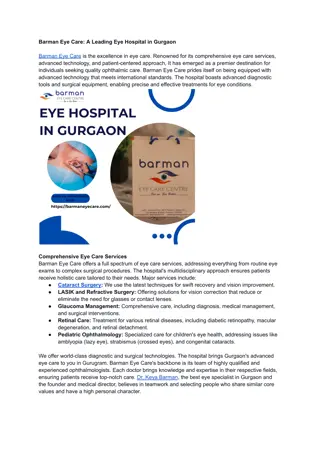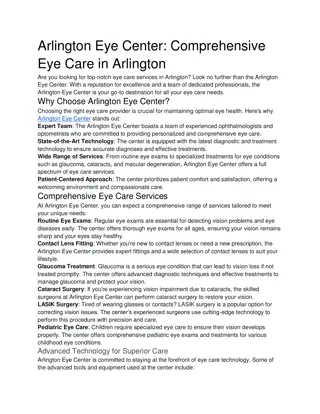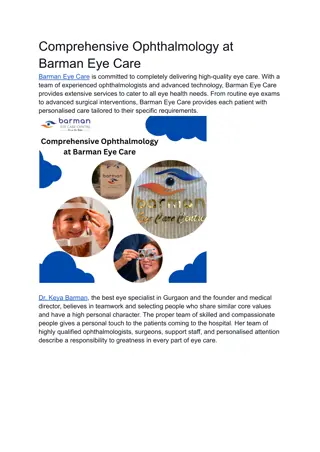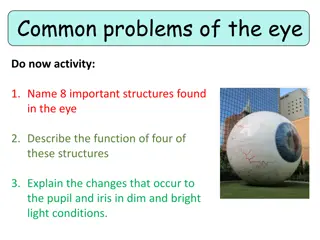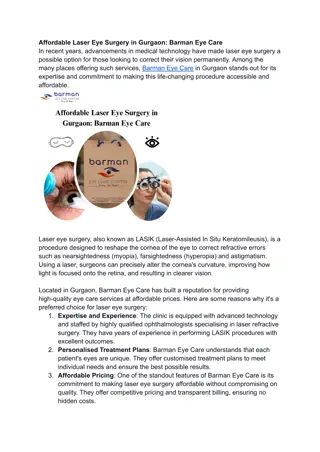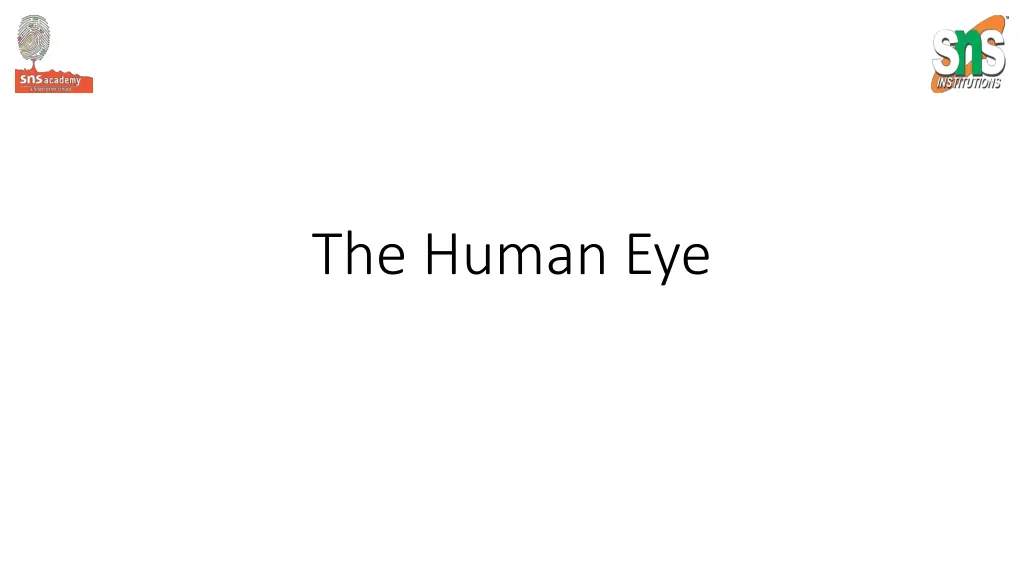
Understanding the Human Eye
Explore the intricate details of the human eye, including its main parts like the cornea, iris, pupil, ciliary muscles, retina, and optic nerve. Learn about the functions of each part and how they work together to create vision, from the cornea where light enters the eye to the retina where images are formed and sent to the brain.
Download Presentation

Please find below an Image/Link to download the presentation.
The content on the website is provided AS IS for your information and personal use only. It may not be sold, licensed, or shared on other websites without obtaining consent from the author. If you encounter any issues during the download, it is possible that the publisher has removed the file from their server.
You are allowed to download the files provided on this website for personal or commercial use, subject to the condition that they are used lawfully. All files are the property of their respective owners.
The content on the website is provided AS IS for your information and personal use only. It may not be sold, licensed, or shared on other websites without obtaining consent from the author.
E N D
Presentation Transcript
The Human Eye: The human eye is one of the most valuable and sensitive sense organs. The main parts of the human eye are cornea, iris, pupil, ciliary muscles, eyelids, retina, and optic nerve.
Cornea: The transparent spherical membrane covering the front of the eye is cornea. The light coming from objects enter into eye through cornea. The outer surface of the cornea is bulging out i.e., convex in shape. Most of the refraction of light rays entering the eye occurs at the outer surface of the cornea.
Iris: The colored diaphragm between the cornea and the lens is iris. The iris is situated just behind the cornea.
Pupil: The middle point of the iris has a hole, which is called pupil. The pupil appears black because no light is reflected from it. Iris controls the size of the pupil. The pupil regulates and controls the amount of light entering the eye.
Eye Lens: The eye lens is a transparent crystalline lens, convex in nature, compared of fibrous jelly-like material, which is held in position by ciliary muscles. The focal length of eye lens can be changed by changing its shape by the action of ciliary muscles.
Retina: The screen on which the image is formed by the lens system of human eye is called retina. The retina is a delicate membrane having enormous number of light- sensitive cells called rods and cones.
Retina: Eye lens forms an inverted real image of the object on the retina. The light-sensitive cells get activated upon illumination and generate electrical signals. The retina sends these signals to the brain via the optic nerves and gives rise to the sensation of vision. In this process of signal transmission from optic nerve to brain, the inverted image is reinverted to give us our usual impression of an erect image.
Rods: Rods respond to the intensity of light, enables us to see in dim light, cannot distinguish between various colors.
Cones: Cones respond to color by generating electric bell pulses. The light-sensitive cells get activated upon illumination and generate electrical signals, which are sent to the brain via the optic nerves. The brain interprets these signals and finally processes the information so that we perceive objects as they are.
Blindspot: It is a spot on the retina near optical nerve which is insensitive to light.
Accomodation: The ability of the eye lens to see far and near objects by adjusting the focal length is called the accommodation of the eye. The ciliary muscles can modify the curvature of the lens. Relaxation of ciliary muscles- Length becomes thin- Increase in focal length (2.5 cm) - ability to see distant objects. Contraction of ciliary muscles - lens becomes thick - focal length decreases - ability to see near objects.
The least distance of distinct vision: The minimum distance at which objects can be seen most distinctly without strain, also called the near point of the eye. For young adults with normal vision, D = 25 cm. Near point: The closest distance at which the eye can focus clearly is called the near point or least distance of distinct vision. For young adults with normal vision, it is about 25 centimeter. Far point: The farthest distance at which an object can be seen clearly is called far point. It is infinity for a normal eye.
Range of vision: The distance between the near point and the far point is called the range of vision. For a normal eye, the range of vision is from 25 cm to infinity.









